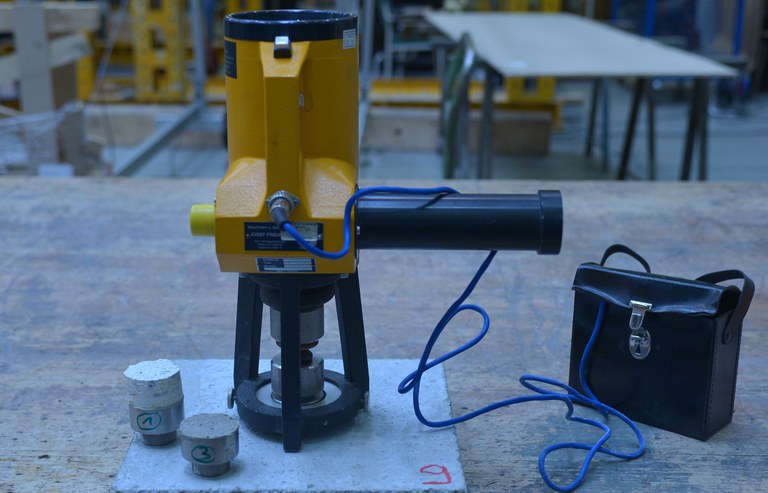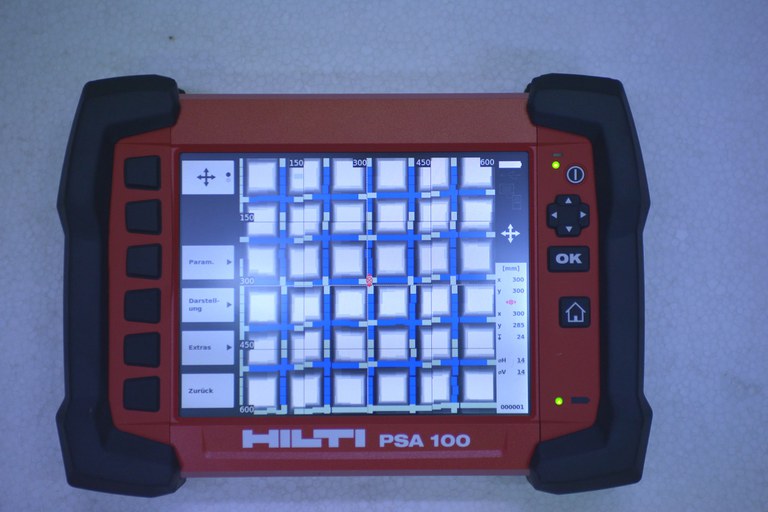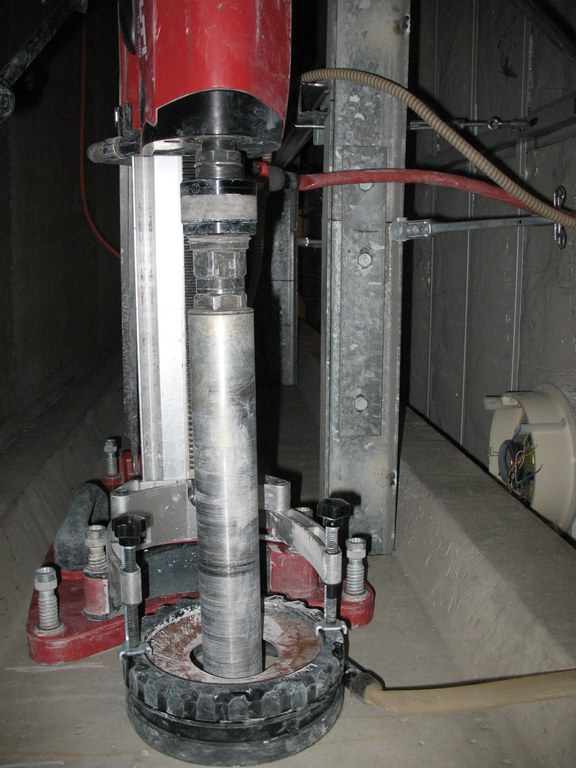Structural health analysis
In situ investigation and sampling are often necessary for evaluating existing buildings. The Institute for Construction Materials has the equipment needed in the course of investigation as basis of expert opinions and uses it also for practice lessons.
Testing tensile strength
Bonding tests
In situ bonding tests are used for quality control of the connection between different layers or for the determination of the adhesive tensile strength of surface layers. The latter is a control of the undercoat quality before the application of a coating or sealing.

Figure: Bonding test equipment with adhesive stamp
Rebar detection and core extraction
Rebar detection
The position of steel reinforcement, concrete cover, rebar spacing and its cross-section are important information which designers need as input for construction measures in existing buildings. The Hilti Ferroscan locates and charts the rebars while being moved over the surface. In case no further information is at hand the building under investigation selective openings by drill-hammer or chisel are needed in order to lay open the rebars verify the scanning information.

Figure: Hilti Ferroscan with information about the rebars detected
Core extraction
The extraction of drill-cores gives insight into the inner quality of concrete. Cores can be used for various laboratory investigation. Among these are density, porosity, concrete composition, strength, Young’s modulus, crack depth, depth of carbonation, permeability, ingress of chemicals (chloride, sulfate) alkali reactivity, rebar conditions, quality of concrete cover an so forth.

Figure: Core extraction on a balcony